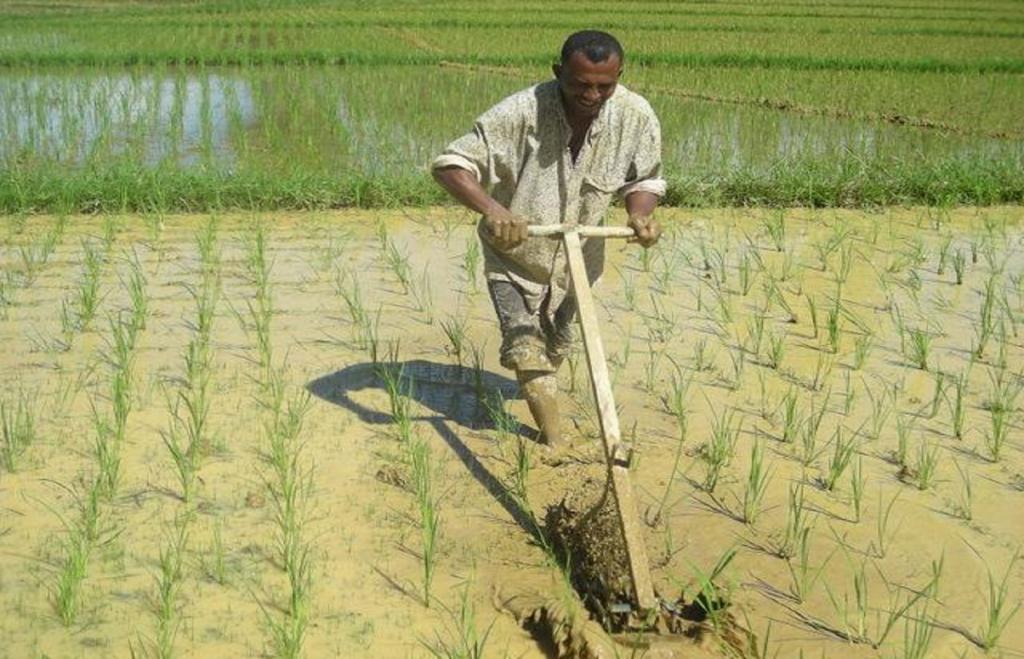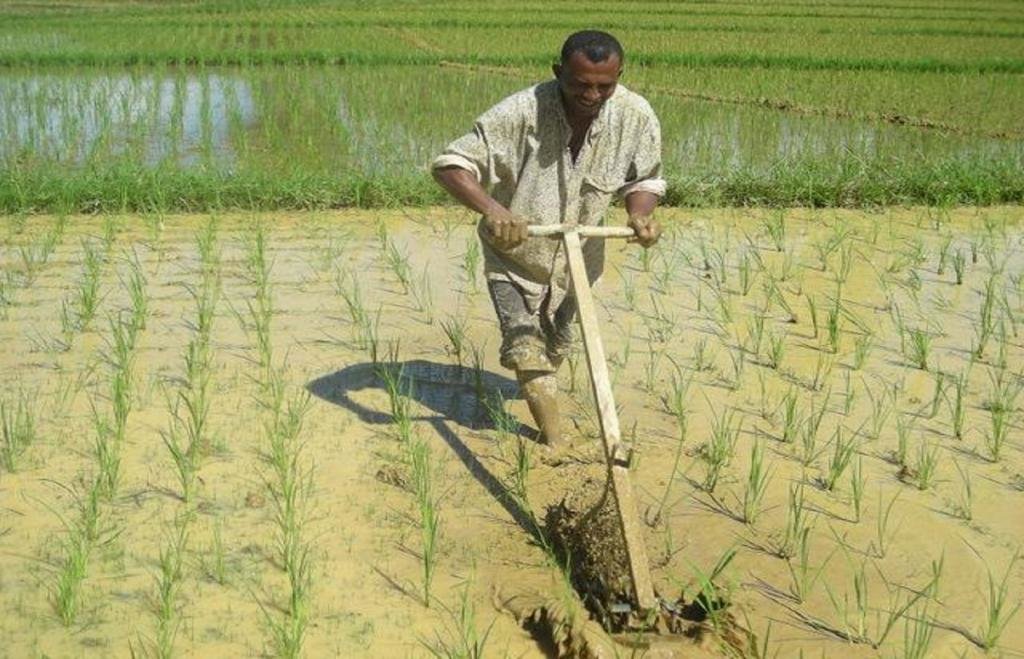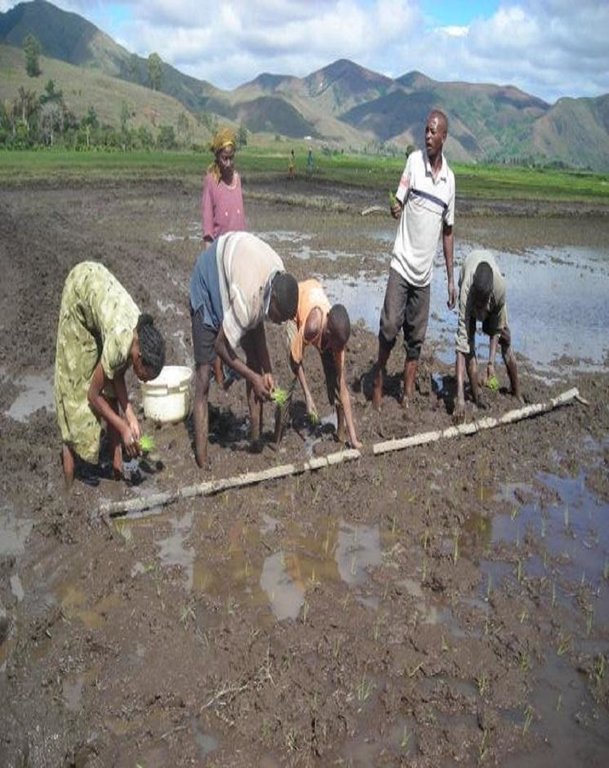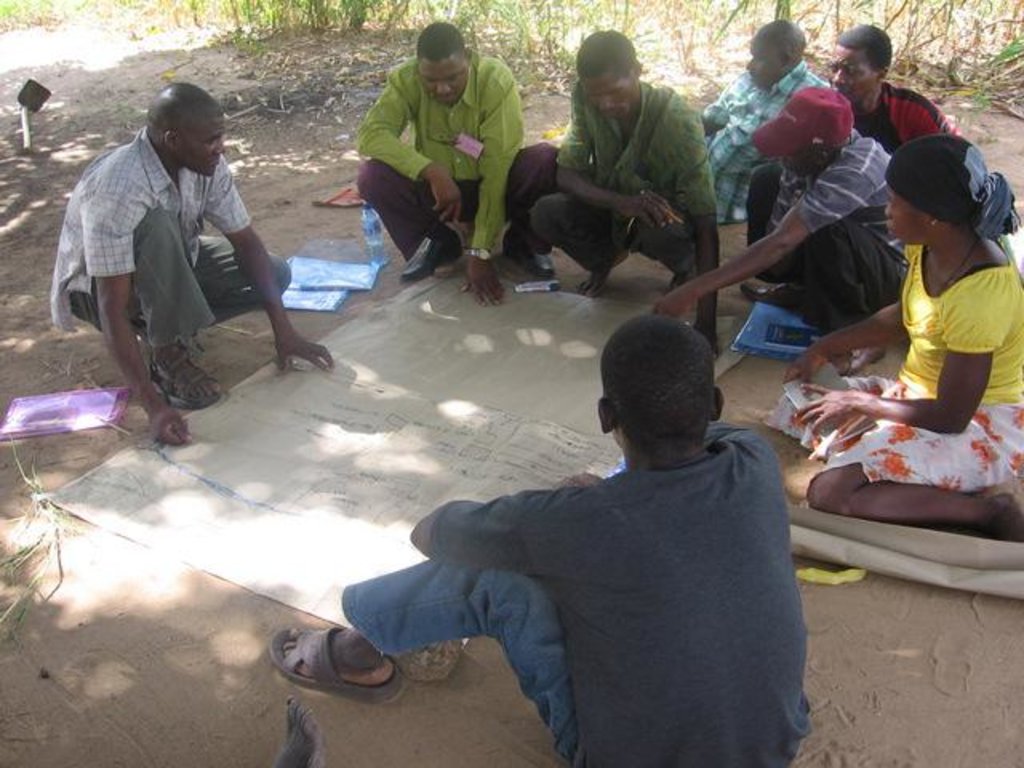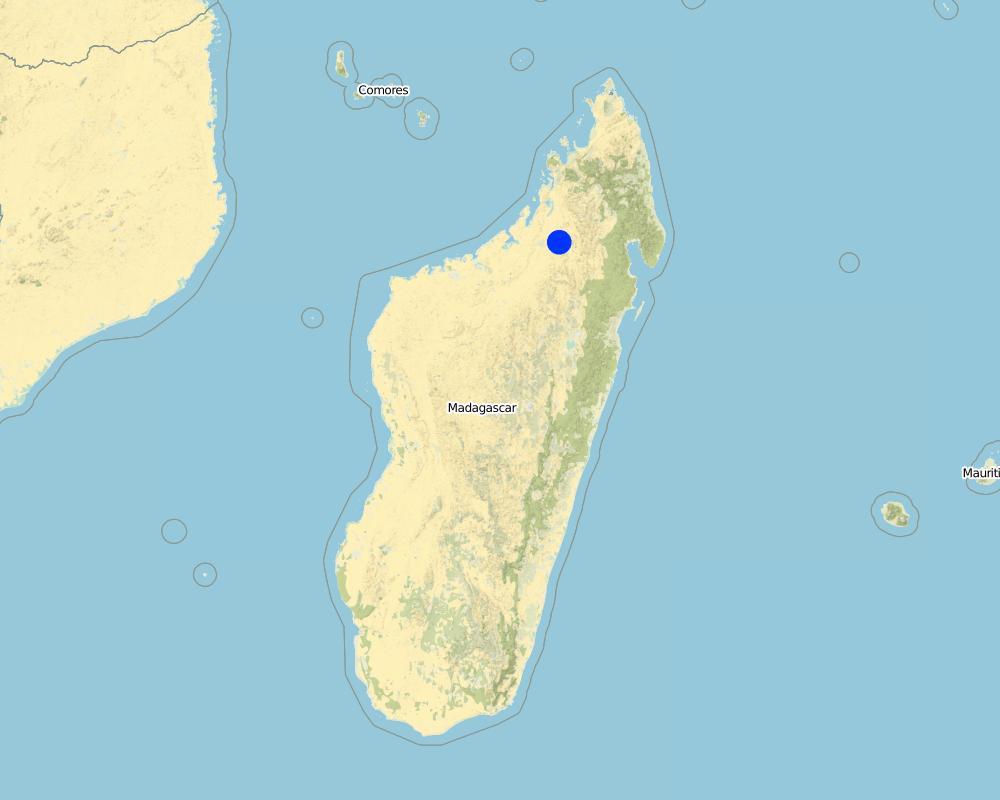Participatory Learning and Action Research approach to Integrated Rice Management [Madagascar]
- Creation:
- Update:
- Compiler: Unknown User
- Editor: –
- Reviewer: Fabian Ottiger
approaches_2571 - Madagascar
View sections
Expand all Collapse all1. General information
1.2 Contact details of resource persons and institutions involved in the assessment and documentation of the Approach
Agric. R&D consultant:
Defoer Toon
tdefoer@aliceadsl.fr
Najac, France
France
SLM specialist:
Wopereis Marco
wopereis@cgiar.org.
Africa Rice Center
Cotonou
Benin
Name of the institution(s) which facilitated the documentation/ evaluation of the Approach (if relevant)
CDE Centre for Development and Environment (CDE Centre for Development and Environment) - SwitzerlandName of the institution(s) which facilitated the documentation/ evaluation of the Approach (if relevant)
Africa Rice Center (AfricaRice) - Côte d'Ivoire1.3 Conditions regarding the use of data documented through WOCAT
The compiler and key resource person(s) accept the conditions regarding the use of data documented through WOCAT:
Ja
2. Description of the SLM Approach
2.1 Short description of the Approach
The Participatory Learning and Action Research approach to Integrated Rice Management (PLAR-IRM) is a bottom-up, social and experiential learning approach, leading to sustainable agricultural improvements, based on mutual support and communication among farmers.
2.2 Detailed description of the Approach
Detailed description of the Approach:
Aims / objectives: Innovation and agricultural change is aimed for, through capacity strengthening of all major stakeholders involved in the rice sub-sector. IRM refers to the production system and value chain as a whole. Innovation is not limited to technological change; it also includes time management and the building of social networks and institutions for mutual collaboration between farmers and other stakeholders within the rice value chain. A step-wise, self-discovery learning mode encourages the stakeholders to find solutions for their own site-specific problems. During the first years, groups of 25-30 producers are supported by a programme facilitator who animates the learning and innovation sessions. The main instruments are the learning modules dealing with specific crop management practices, harvest and post-harvest practices (involving processors and entrepreneurs also), as well as the agro-ecological and socio-economic conditions of rice production. The sessions aim to strengthen farmers’ and other rice stakeholders' capacity to observe, analyze, interpret, make decisions, innovate and share knowledge and experiences. PLAR is based on locally relevant knowledge, practices and skills. Exchanges about current practices, and their logic or justification, are the starting point in all modules.
Methods: In a learning-by-doing approach farmers are encouraged to try out any new ideas identified during PLAR sessions on some parts of their fields reserved for new practices (“innovation space”). This allows them to assess the impact of such innovations on their rice yield, or on the profitability of rice growing and the rice business as a whole, and consequently to adapt and fine-tune the measures taken according to their needs. These innovation spaces are regularly visited as part of learning sessions for knowledge sharing between farmers. Since 2005, innovations in land preparation, early transplanting of seedlings, weeds and water management - basically without external inputs - have resulted in three times higher yields, benefitting thousands of farmers. Rice value chain activities started in 2008 with a view to empowering farmers' position within the chains and improving the competitiveness. Groups are unifying into PLAR centres with common marketing of rice, and contract input providers and rice processors.
2.3 Photos of the Approach
2.5 Country/ region/ locations where the Approach has been applied
Country:
Madagascar
Further specification of location:
Sofia Region
Map
×2.7 Type of Approach
- project/ programme based
2.8 Main aims/ objectives of the Approach
The Approach focused mainly on SLM with other activities (value chain develop¬ment: collective storage and marketing of rice; contractual arrangements with input providers and rice processors)
Sustainably improving food security, livelihoods and incomes of poor rice farmers by boosting the profitability of rice production and increasing the efficiency and competitiveness of the rice sub-sector; Capacity strengthening of all stake-holders involved in the rice-subsector
The SLM Approach addressed the following problems: Low yields in rice production; Most farmers live below subsistence level; Absence of government and NGO support; Limited access to markets, lack of infrastructure
3. Participation and roles of stakeholders involved
3.1 Stakeholders involved in the Approach and their roles
- local land users/ local communities
rice farmers
marginalised poor rice farmers are targeted
- private sector
private service providers (e.g. input suppliers), rice processors and buyers
- local government
- international organization
Aga Khan Foundation
3.2 Involvement of local land users/ local communities in the different phases of the Approach
| Involvement of local land users/ local communities | Specify who was involved and describe activities | |
|---|---|---|
| initiation/ motivation | interactive | |
| planning | interactive | |
| implementation | interactive | |
| monitoring/ evaluation | none | |
| Research | none |
3.4 Decision-making on the selection of SLM Technology/ Technologies
Specify who decided on the selection of the Technology/ Technologies to be implemented:
- land users alone (self-initiative)
Explain:
Decisions on the method of implementing the SLM Technology were made by mainly by land users supported by SLM specialists
4. Technical support, capacity building, and knowledge management
4.1 Capacity building/ training
Was training provided to land users/ other stakeholders?
Ja
Specify who was trained:
- land users
- field staff/ advisers
Form of training:
- on-the-job
- farmer-to-farmer
Subjects covered:
crop management practices, harvest and post-harvest practices (incl. storage, marketing), socio-economic and ecological conditions of rice farming; curriculum based on needs assessment
4.2 Advisory service
Do land users have access to an advisory service?
Ja
Specify whether advisory service is provided:
- on land users' fields
Describe/ comments:
Name of method used for advisory service: modular learning sessions guided by a facilitator, farmer-to-farmer extension; Approach is based on indigenous knowledge
4.5 Research
Was research part of the Approach?
Ja
Give further details and indicate who did the research:
crop management practices
Research was carried out on-farm
5. Financing and external material support
5.1 Annual budget for the SLM component of the Approach
If precise annual budget is not known, indicate range:
- 100,000-1,000,000
Comments (e.g. main sources of funding/ major donors):
Approach costs were met by the following donors: international: 10.0%; national non-government: 30.0%; private sector: 10.0%; local community / land user(s): 50.0%
5.2 Financial/ material support provided to land users
Did land users receive financial/ material support for implementing the Technology/ Technologies?
Ja
5.3 Subsidies for specific inputs (including labour)
- equipment
| Specify which inputs were subsidised | To which extent | Specify subsidies |
|---|---|---|
| tools | fully financed | Two sarcleuses (weeding equipment) per starting group are provided for free and remain property of the group |
Comments:
Two sarcleuses (weeding equipment) per starting group are provided for free and remain property of the group
5.4 Credit
Was credit provided under the Approach for SLM activities?
Ja
Specify conditions (interest rate, payback, etc.):
Interest rate charged: 2.5%; repayment conditions: Was supported by the approach in collaboration with an existing microfinance institution; loan period: 6-8 months, 2.5% monthly (!) interest rate.
6. Impact analysis and concluding statements
6.1 Impacts of the Approach
Did the Approach help land users to implement and maintain SLM Technologies?
- No
- Yes, little
- Yes, moderately
- Yes, greatly
yields have increased by > 200% (on innovation spaces)
Did the Approach empower socially and economically disadvantaged groups?
- No
- Yes, little
- Yes, moderately
- Yes, greatly
marginalised poor rice farmers are targeted
Did other land users / projects adopt the Approach?
- No
- Yes, little
- Yes, moderately
- Yes, greatly
from 2005-2009 PLAR groups have increased from 6 up to 102, involving 3782 families and extended to 4200 non grouped farmers
Did the Approach help to alleviate poverty?
- No
- Yes, little
- Yes, moderately
- Yes, greatly
SLM practices result into a net benefit of > 700 US$/ha
6.2 Main motivation of land users to implement SLM
- increased production
- increased profit(ability), improved cost-benefit-ratio
- affiliation to movement/ project/ group/ networks
6.3 Sustainability of Approach activities
Can the land users sustain what has been implemented through the Approach (without external support)?
- yes
If yes, describe how:
In a 2nd phase farmers who are organised in PLAR groups gradually build up the capacity to manage the innovation and mutual learning approach on their own without programme support: Farmers facilitators are trained to take over the lead of PLAR groups with backstopping from programme facilitators.
6.4 Strengths/ advantages of the Approach
| Strengths/ advantages/ opportunities in the compiler’s or other key resource person’s view |
|---|
| Farmers learn basic principles of rice management and develop their own locally adapted options for improvements; the innovation comes from inside the groups. |
| Farmers build up individual and organisational capacity to find solutions to their problems and build confidence as efficient partners with other value chain actors. |
6.5 Weaknesses/ disadvantages of the Approach and ways of overcoming them
| Weaknesses/ disadvantages/ risks in the compiler’s or other key resource person’s view | How can they be overcome? |
|---|---|
| Labour intensive improvements | provision of group credit to PLAR group members in collaboration with a local microfinance institution |
| Learning intensive approach, with regular group learning sessions | PLAR groups elaborate their own learning programmes and curricula according to their availability and needs |
7. References and links
7.1 Methods/ sources of information
- field visits, field surveys
- interviews with land users
7.2 References to available publications
Title, author, year, ISBN:
Defoer T., M. Wopereis, S. Diack, and P. Idinoba. 2008. Apprentissage participatif et recherche action pour la gestion intégrée du riz à Madagascar: Manuel du facilitateur AKF, Genève, Suisse. Defoer T., M. Wopereis, P. Idinoba T. and Kadisha. 2006. Participatory Learning and Action Reseaerch (PLAR) for Integrated Rice Management in inland valleys in sub-saharan Africa: Facilitators’ manual. WARDA- the Africa Rcie Center, Bouaké, Côte d’Ivoire.
Title, author, year, ISBN:
Defoer T., M. Wopereis, P. Idinoba T. and Kadisha. 2006. Participatory Learning and Action Reseaerch (PLAR) for Integrated Rice Management in inland valleys in sub-saharan Africa: Facilitators’ manual. WARDA- the Africa Rcie Center, Bouaké, Côte d’Ivoire.
Links and modules
Expand all Collapse allLinks
No links
Modules
No modules


